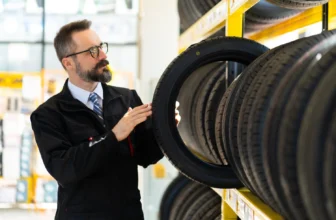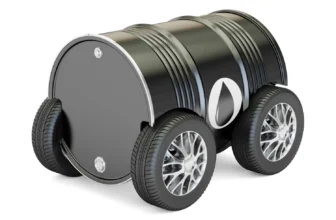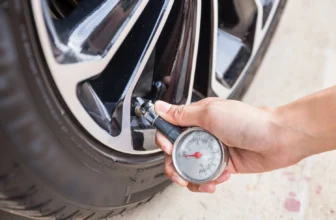
Introduction: Bigger Isn’t Always Better
In Pakistan, upgrading your car’s tyre size is a common way to improve stance, ride height, or aesthetics. Whether it’s a Corolla switching from 15” to 16” alloys, or a Wagon R owner trying to reduce body roll, these changes are everywhere. But without understanding tyre size calculation, you risk hurting fuel economy, damaging suspension components, or worse—throwing off your speedometer calibration. This guide walks you through the logic behind tyre size upgrades in the Pakistani market and how to avoid the most common mistakes.
Understanding Tyre Size Basics
Every tyre has a size code printed on the sidewall, such as 185/65R15. Here’s what that means:
- 185: Tyre width in millimeters
- 65: Aspect ratio (sidewall height as a percentage of width)
- R: Radial construction
- 15: Rim diameter in inches
Together, these dimensions determine the total outer diameter of the tyre—critical for ride height, suspension behavior, and speedometer accuracy.
Why People Upgrade Tyre Sizes in Pakistan
Drivers in Pakistan commonly upgrade tyre sizes for several reasons, depending on region and vehicle type:
- Better Road Grip: Wider tyres improve traction, especially on highways.
- Enhanced Aesthetics: Larger rims and lower-profile tyres offer a sportier look.
- Increased Ground Clearance: Slightly taller tyres help on speed breakers and uneven urban roads.
- Comfort Tuning: Some drivers downsize rim size and increase sidewall to improve ride softness.
However, there’s a right way to upgrade—and a wrong way that can cost you in repairs and running costs.
The 3% Rule: How Much Can You Actually Upgrade?
Tyre experts and manufacturers globally agree that the new tyre’s overall diameter should not deviate more than 3% from the factory specification. Exceeding this leads to:
- Inaccurate speedometer and odometer readings
- Additional stress on suspension and steering components
- Poor fuel efficiency due to altered gear ratios
- Rubbing inside wheel wells, especially when turning or during bumps
Use online calculators like tiresize.com or wheel-size.com and compare your existing size with the intended upgrade to check if it stays within the 3% safe zone.
Real-World Examples in Pakistan
Here are typical upgrade cases you’ll see on local roads:
| Car Model | OEM Size | Popular Upgrade | Safe? |
|---|---|---|---|
| Suzuki Cultus (New Shape) | 165/65R14 | 185/60R15 | ✔ Within 2.5% |
| Toyota Corolla GLi | 195/65R15 | 205/60R16 | ✔ Within 2.2% |
| Honda Civic Turbo | 215/55R16 | 225/50R17 | ✔ Close to 2.7% |
| Suzuki Wagon R | 145/80R13 | 165/70R13 | ✔ Safe upgrade |
| Hyundai Tucson | 225/55R18 | 235/50R18 | ✔ Marginal increase |
How Tyre Size Affects Fuel Economy
It’s tempting to go wider for better grip, but every extra mm of tyre width increases rolling resistance. That means:
- Higher fuel consumption in city traffic
- Heavier steering (if no EPS)
- Reduced pickup on smaller-engine cars
For example, upgrading a Suzuki Alto from 145 mm to 175 mm width can reduce mileage by 1–1.5 km/l in city conditions, especially with AC on. It’s a noticeable cost over time.
Suspension Stress and Handling Tradeoffs
Bigger tyres aren’t always better for handling. Wider tyres may grab better, but they:
- Transfuse more road vibration to the cabin
- Wear out suspension bushings faster due to added weight
- Reduce turning radius in tight spots
Sporty upgrades like 17” or 18” tyres on Civic, Elantra, or Sportage look great but only make sense if the roads you drive on are smooth and well-maintained.
When It’s Actually Worth It
Tyre upgrades are smart if:
- Your current tyres are undersized for load (common in budget models)
- You drive mostly on highways and want better stability
- Your local roads are so broken that taller sidewalls are essential for comfort
- You’re switching to alloy rims and need a compatible upgrade
But any upgrade should still be calculated—not decided in a tyre shop without checking specs.
How to Use a Tyre Size Calculator Effectively
If you’re considering an upgrade, use any of the following tools to simulate it:
- tiresize.com: Compares visual and metric differences
- wheel-size.com: Shows OEM sizes and recommended alternates
- tyresize.pk: Local version (if available) with car-specific suggestions
You can input your current size and intended upgrade. The tool will show % deviation in diameter, changes in RPM, and visual height comparisons.
Final Advice: Don’t Let Style Compromise Function
Upgrading tyres can make your car look more aggressive and drive better—but only if done within engineering tolerances. A wrong upgrade can cause long-term damage to your vehicle’s steering rack, suspension, or fuel efficiency. Always check deviation percentage before committing, and if unsure, consult a local expert or a trusted dealer like TyrePoint.pk who can guide you based on real fitment experience across all car models in Pakistan.






